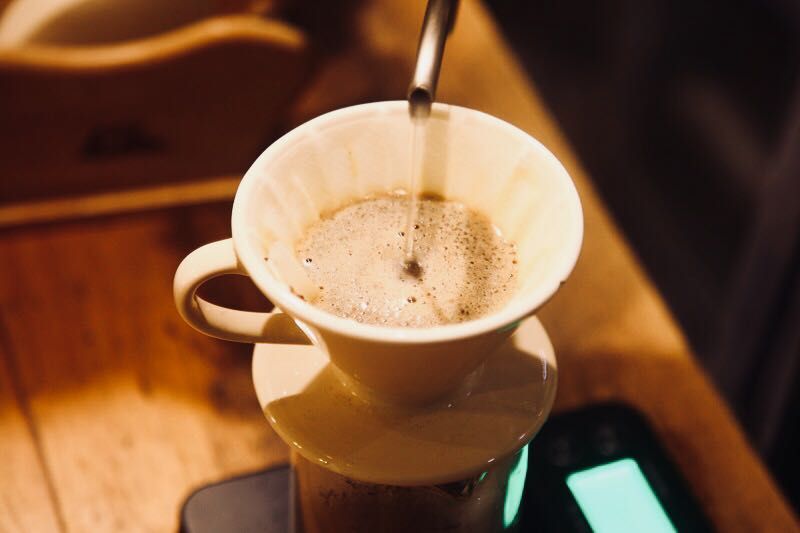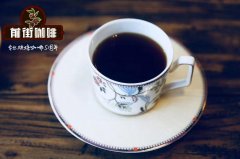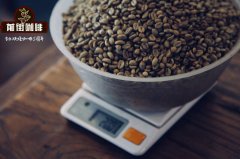Ethiopia Kongjia coffee beans... Whose house is it? How do you drink Ethiopian coffee?

Professional coffee knowledge exchange more coffee bean information please follow the coffee workshop (Wechat official account cafe_style)
Flavor characteristics of Ethiopian coffee producing area _ Ethiopian Yega Xuefei boutique coffee
Kongjia (also often translated as "Kongjia")
In fact, it is a cooperative (Konga Cooperative) in the Yegashafi producing area of Ethiopia.
The coffee beans of the Kongjia Cooperative are a rising star in recent years.
If you go to Coffee Review website and type Konga
According to the search results, there are as many as 24 cups with scores higher than 90 points.
He scored 94 points this year (2017).
This time, Xiao Ka will introduce this super-powerful cooperative.
The Conga Cooperative (Konga Coop) is one of the 26 cooperatives under the Yega Coffee Farmers' Cooperative Union (The Yirgacheffe Coffee Farmers Cooperatives Union, YCFCU) (the familiar Guotintin Cooperative is also one of them)
YCFCU was founded in June 2002, 26 cooperatives are located in the Gedeo region of southern Ethiopia, is a very famous important coffee producing area in Ethiopia, but today it represents more than 50, 000 coffee farmers, that is, more than 300000 families!
The Conga Co-operative was established in 1994. Because of its proximity to the Konga River Basin, Konga was used as the name of the cooperative. The Konga Cooperative covers 1556 families of small coffee farmers, all of whom cultivate an average area of less than 1.25ha at an altitude of about 1800 to 2000 meters. Coffee varieties are mainly a mixture of Typica and local native species (Heirloom).
What makes Konga special is the red soil where coffee beans are grown. Laterite is rich in high-speed iron, and the thickness of laterite is 1.5m. Deep soil is rich in nutrients, and high iron content is also good for coffee beans, because iron is a micronutrient that helps plants produce chlorophyll, which is very helpful for photosynthesis, allowing plants to absorb more energy and produce better fruits. There is no doubt that red soil is one of the keys to the production of delicious coffee beans by Kongjia Cooperative.
The Kongjia cooperative has its own water washing treatment plant, and the water washing process is quite meticulous. Freshly ripe coffee cherries will first go through the peeling machine to remove the peel, and the pulp and mucous layer will be removed during the fermentation process. After the fermentation process is completed, it will be washed with clean spring water to remove the fermented mucous layer. In Kongjia, shell beans are placed on shaded viaducts for 10 to 12 days to dry so that the moisture can be reduced to 12%. After that, the beans will be moved to the warehouse for graded packaging, which will be sold to exporters, who will sell to the international coffee market.
Kong's coffee beans, in addition to the typical Yega fruit tone, the washing batches we have tested these times have a very comfortable flavor of honey grapefruit tea! The acidity is just right, with a little lime aroma, with blueberry sweetness, sweet and sour taste, is the charm of the Confucius family.
And it tastes clean, and it's easy to get the taste you like when brewed in an American coffee pot. Some batches can also be traced back to specific small farmers to taste Kong plus different charm.
Introduction to the flavor difference between Ethiopian Yejasuefei and Sidamo coffee beans
Important Notice :
前街咖啡 FrontStreet Coffee has moved to new addredd:
FrontStreet Coffee Address: 315,Donghua East Road,GuangZhou
Tel:020 38364473
- Prev

A new chapter in Ethiopian boutique coffee-the way to the west Ethiopian coffee tomoca
Professional coffee knowledge exchange more coffee bean information please follow the coffee workshop (Wechat official account cafe_style) Ethiopian coffee producing area flavor characteristics _ Ethiopia Yega Xuefei boutique coffee in the introduction of this bean, we want to share with you not just a bean, a flavor or a story, we want to join you into a new Ethiopia
- Next

What is Blue Jamaica Coffee? How much Jamaica Blue Mountain Coffee is imported to China each year
Professional coffee knowledge exchange More coffee bean information Please pay attention to coffee workshop (Weixin Official Accounts cafe_style) Authentic Jamaica Blue Mountain Coffee_The best Jamaica Blue Mountain Coffee in the world Blue Mountain Coffee is located in the east of Jamaica, and its NO.1 is the representative of the highest grade in the Jamaica coffee classification. Coffee plantations are mainly distributed among mountains above 5000 feet above sea level, with abundant rainfall and
Related
- Detailed explanation of Jadeite planting Land in Panamanian Jadeite Manor introduction to the grading system of Jadeite competitive bidding, Red bid, Green bid and Rose Summer
- Story of Coffee planting in Brenka region of Costa Rica Stonehenge Manor anaerobic heavy honey treatment of flavor mouth
- What's on the barrel of Blue Mountain Coffee beans?
- Can American coffee also pull flowers? How to use hot American style to pull out a good-looking pattern?
- Can you make a cold extract with coffee beans? What is the right proportion for cold-extracted coffee formula?
- Indonesian PWN Gold Mandrine Coffee Origin Features Flavor How to Chong? Mandolin coffee is American.
- A brief introduction to the flavor characteristics of Brazilian yellow bourbon coffee beans
- What is the effect of different water quality on the flavor of cold-extracted coffee? What kind of water is best for brewing coffee?
- Why do you think of Rose Summer whenever you mention Panamanian coffee?
- Introduction to the characteristics of authentic blue mountain coffee bean producing areas? What is the CIB Coffee Authority in Jamaica?

